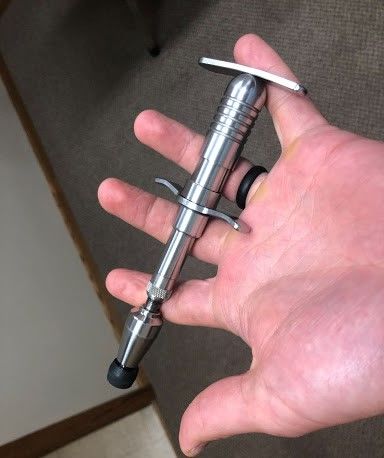
What Tools Do Chiropractors Use
Share
No matter the technique a chiropractor utilizes, they all need chiropractic tables. There are a few chiropractic tools and techniques that do not require a table, however, when it comes to the scalability and performance of a provider. A table is crucial to have a successful practice treating subluxations and reducing patient pain during their chiropractic treatment.
There are over 200 chiropractic adjusting techniques in circulation. No one, single chiropractor can master them all. However, a great chiropractor will find their strengths and weaknesses and then choose a handful of techniques based on their own strengths to reduce pain to a patient’s area of concern.

Chiropractic adjusting tables:
There are many different options for chiropractic tables. Some are just a bench roughly knee height. Others have more options. The more options you have (pneumatics, hydraulics, electronics), the more chiropractic techniques you can utilize and the more age groups of patients you can treat. You also have less wear and tear on your body with a table that can do more of the work for you. The following link is the site to the table I currently use, the Lloyd Galaxy Ultimate. https://www.lloydtable.com/index.php?p=210393
Electric Stimulation:
Electric stimulation is a great passive modality used by chiropractors and physical therapists on a daily basis. Electric stimulation allows a provider to relax the muscles around the area of concern to be able to effectively help the patient with their issues.
Electric stimulation is a great addition to a practice because it is passive. I recommend a separate room for this treatment. This allows you to

Cold Laser:
Cold laser is another hand held device to add to your chiropractic clinic. It is quite expensive, but it is an effective treatment for sprains, soft tissue injuries, nerve pain, and any kind of pain relief. An effective cold laser treatment only lasts two minutes. I personally like cold lasers more than ultrasound because it takes less time to treat, and I do not have to keep the modality moving all the time, as I would with ultrasound.
Activator Adjusting Tool, Activator Method:
Activator is a hand held device that allows a provider to treat patients with many complaints such as neck pain, thoracic pain, or low back pain. The picture beside is an example of the activator adjusting instrument. Activator technique is a handheld, spring loaded spinal adjustment tool to offer precise, minimal impact adjustments. This technique is a great benefit to all age groups, but primarily to the elderly population who are more arthritic and fragile seeking relief from chronic issues.
Anterior Assist Alpha

Anterior Assist Alpha is a great way to adjust the thoracic spine without hurting your own hands. This instrument assisted approach to adjusting the thoracic spine offers the protection chiropractors need on a day to day basis.
Anterior thoracic spinal adjustments are taught in school to use our fist under the patient’s body as a fulcrum. However, using this approach only causes damage to the chiropractors own body.
A chiropractor should never hurt their own body caring for a patient.
When you are on our website, you can find much information information pertaining to the use of this tool. I have found this tool to be very helpful for my patients that are very large, obese, overly stiff, or muscle bound.
There you have it; a quick overview of a few must-have chiropractic tools in every chiropractors office. Each one of these tools has their own advantages.
Using these tools throughout your day will make you a better clinician. You will be able to offer patients what they truly need based on ages, fragility, and musculoskeletal structure.
